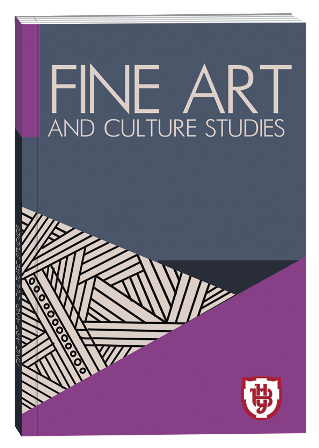ANDRII KHVYLIA AS AN ART CRITIC
DOI:
https://doi.org/10.32782/facs-2023-5-13Keywords:
Art criticism, Soviet, Khvylia, artwork, totalitarianism, languageAbstract
The article concerns the topic of Ukrainian artistic culture and art criticism of the 1930s. The article aims to identify the key trends in the formation of a new discourse of Ukrainian Soviet art criticism and to analyze its general characteristics. The research is conducted on the material of the publications in the "Fine art. Almanac" magazine of 1934, authored by the Ukrainian SSR education commissar Andrii Khvylia. In a totalitarian regime, power is indirectly and directly realized and reproduced in discourse and cannot be real without communication, it requires text, knowledge, beliefs and ideology that support and reproduce it. In the 1930s, the Soviet totalitarian language was gradually filling the space of Ukrainian culture: through translations, editing, and the creation of new "ideologically correct" dictionaries. Alongside, the process of creating a canon of Soviet culture took place, in which art critics were active participants. The appearance of texts authored by officials of the highest rank and performing inquisitorial functions was characteristic of the period of formation of totalitarianism in Ukraine, when Stalin's leadership changed the socioeconomic foundations of society. The personality of the author and the level of his authority ensured a specific form of text perception. Occupying a hybrid position in the field of culture, which combined belonging to the authorities and the right to aesthetic expression, Khvylia is an example of a "double agent", whose power comes from outside this field, and the statements are ideological in nature. By analyzing samples of the critic's individual work and comparing his ideological evaluation of the works with their neutral art analysis, it is possible to draw conclusions about the key tendencies of art evaluation from the position of the authorities rather than academic art criticism, distinctive for the decade of the 1930s, as well as the properties of the emerging art critical discourse.
References
Годун Н.І. Політична діяльність А. Хвилі в УСРР (1926–1936): функції і завдання головного цензора. Проблеми історії України: факти, судження, пошуки. 2006. Вип. 15, с. 155–167.
Коломієць Р. Лесь Курбас. Харків, 2019. С. 70–90.
Комашко А. За пролетарську гегемонію у просторовому мистецтві: процеси мистецького руху в УСРР відбудовного періоду. Шляхи розвитку просторового мистецтва реконструктивного періоду. Харків. 1931.
Криволапов М.О. Про мистецтво та художню критику України ХХ століття. Київ, 2006. 268 с.
Меллер Вадим. Бібліотека українського мистецтва. URL: https://uartlib.org/ukrayinski-hudozhniki/mellervadim/(дата звернення 7.11.2023)
Мельникова У.П. Мистецькі об'єднання в Україні 1920-х – поч. 1930-х років (теоретичні засади та творча практика) : автореферат дисертації…кандидат мистецтвознавства : 17.00.05. Харків, 2007. 20 с.
Седляр Василь. Енциклопедія українознавства, Київ. 1994, с. 187.
Хвиля А.А. Образотворчий фронт. Образотворче мистецтво. Альманах 1. 1934. № 1, c. 81–115.
Шехтман Мануїл. Бібліотека українського мистецтва. URL: https://uartlib.org/ukrayinski-hudozhniki/shehtman-manuyil/ (дата звернення 7.11.2023)
Юренко О.П. Хвиля Андрій Ананійович. Енциклопедія історії України, Т.10. Київ, 2013.URL: http://www.history.org.ua/?termin=Khvylia_A (дата звернення 06.11.2023)
Ясакова Н.Ю. Мова тоталітаризму в дзеркалі одного тексту: стаття Андрія Хвилі «Від ухилу – у прірву». Мова: класичне – модерне – постмодерне. 2019. Вип. 5, с. 98–113.
Bourdieu P. The Field of Cultural Production. New York. 1994. P. 29–74.
Sternau S. Art Deco: Flights of Artistic Fancy, Todtri Book Publishers, 1997, p. 9.







